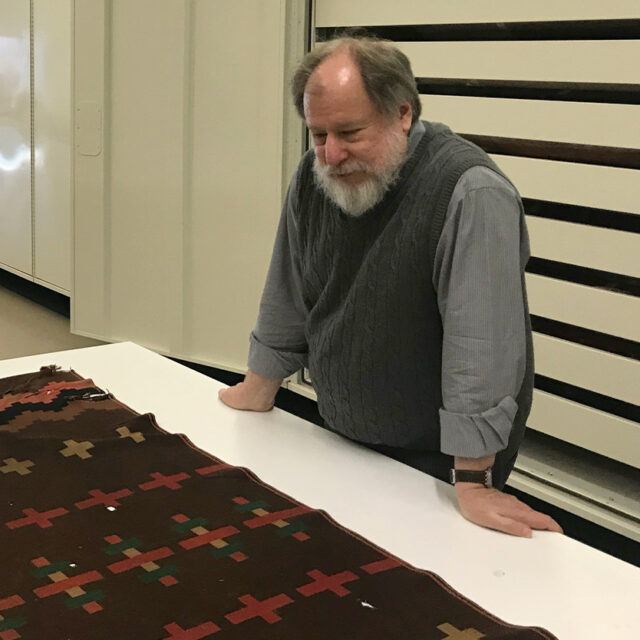In the fall of 1909, the anthropology curators at the American Museum of Natural History (AMNH), New York, deciding that their collecting activities had focused too much on the Northwest Coast, Arctic, and Plains, began a new regional initiative—the Archer M. Huntington Southwest Expedition. Losing no time, they began rapidly to build up a collection of Navajo textiles, both from sponsored field expeditions and through the acquisition of existing collections. Over a period of eight months during the following year, they acquired three large private collections: those of Emil W. Lenders in February; Margaret Olivia Sage in May; and Uriah S. Hollister in October, in addition to a small but important field collection, made by curator Pliny E. Goddard, in April. Following this initial campaign of acquisition, the museum continued to acquire Navajo textiles throughout the next century, largely shifting from purchases to gifts, mostly from private donors. The collection now numbers almost three hundred items.
This essay focuses on the biographies of Navajo textiles after they left Native hands. For this collection we do not know much about the processes of acquisition whereby the objects came into the possession of the collectors who donated them to the museum. The present discussion starts with AMNH’s institutional imperatives and continues with its relationships with the various collectors, considering their own personal stories and interactions with the museum. It thus puts these weavings in context with the formation of the museum’s Native American collections and with the history of collecting Navajo textiles more generally.
